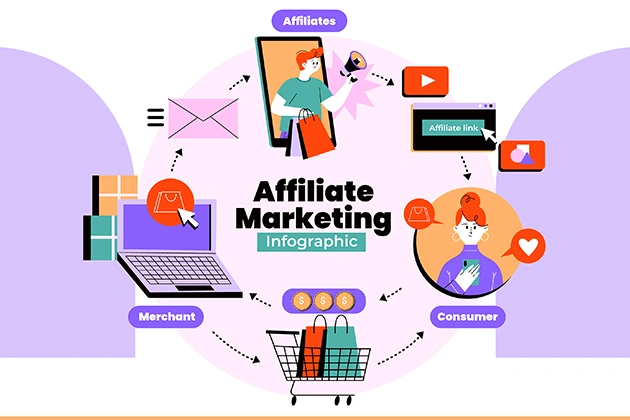Introduction: The Critical Role of Brand Awareness in Digital Success
In today’s overcrowded digital landscape, brand awareness has evolved from a marketing buzzword to a critical business imperative. Companies with strong brand recognition enjoy 58% higher market share and can charge up to 13% more for similar products compared to unknown competitors. Despite its importance, many businesses struggle with effectively building and measuring brand awareness in the digital realm.
Brand awareness represents the extent to which consumers can recognize and recall your brand across various contexts. In practical terms, it means that when someone needs a product or service in your category, your brand comes to mind first. The digital environment presents both challenges and opportunities for brand building—while competition has never been fiercer, the tools available for reaching and engaging audiences have never been more powerful or accessible.
This article explores seven proven tactics that businesses of all sizes can implement to increase their online visibility, build meaningful connections with their target audience, and establish a memorable brand presence that drives long-term business growth.
1. Content Marketing with a Strategic Edge
Beyond Basic Blogging
Content remains king in brand building, but the approach has evolved significantly. Strategic content marketing focuses on creating and distributing valuable, relevant content that attracts and engages a clearly defined audience. The key differentiator for brand awareness is creating content that’s not just useful, but also distinctly reflective of your brand’s personality and values.
Implementing Effective Content Strategies
- Develop Signature Content Formats: Create unique content series that become synonymous with your brand. This could include weekly industry insights, monthly expert interviews, or regular case studies that showcase your expertise in a distinctive format.
- Leverage Multiple Content Formats: Different audiences prefer different content types. Repurpose core content into blogs, videos, podcasts, infographics, and social media snippets to maximize reach across platforms.
- Focus on Shareability: Create content with built-in shareability by addressing trending industry topics, solving common problems, or evoking emotional responses. Include social sharing prompts and optimize content for easy consumption and distribution.
- Consistent Brand Voice and Visual Identity: Ensure all content maintains consistent brand elements—from color schemes and logos to tone of voice and messaging. This consistency builds recognition and reinforces brand identity across touchpoints.
2. Strategic Social Media Presence
Choosing Platforms Strategically
The myth of needing to be everywhere on social media has been debunked by successful brands that instead focus on strategic platform selection. Identify where your target audience spends time and which platforms align with your brand personality and content strengths.
Advanced Social Media Tactics for Brand Awareness
- Platform-Specific Content Strategy: Tailor your content to each platform’s unique features and audience expectations. Create native content that leverages platform-specific formats like Instagram Stories, LinkedIn Articles, or TikTok videos rather than cross-posting identical content.
- Strategic Engagement Approach: Move beyond automated responses to genuine engagement. Participate in relevant conversations, respond thoughtfully to comments, and join industry-specific discussions to increase visibility and build community.
- Employee Advocacy Programs: Empower employees to become brand ambassadors by sharing company content and industry insights. Employee networks typically have 10x the reach of corporate channels and generate 8x more engagement.
- Consistent Posting Schedule: Maintain a regular presence without sacrificing quality. Use social media management tools to plan and schedule content while reserving resources for real-time engagement and opportunistic posting.
3. Search Engine Optimization (SEO) for Visibility
Technical and Content Foundations
SEO provides the fundamental visibility infrastructure that makes brand awareness possible. When your content appears prominently in search results for relevant queries, it not only drives traffic but also builds credibility and brand recognition over time.
SEO Strategies for Brand Awareness
- Comprehensive Keyword Strategy: Target a mix of branded, industry, and problem-solving keywords. Focus on building topical authority around your core expertise areas through clusters of related, high-quality content.
- Local SEO Optimization: For businesses with physical locations or service areas, optimize for local search through Google Business Profile, local citations, and location-specific content. Local pack results capture significant visibility and drive brand recognition within geographic communities.
- Rich Snippet Optimization: Structure content to appear in featured snippets, knowledge panels, and other SERP features that capture disproportionate visibility and lend authority to your brand.
- Branded Search Optimization: Ensure you own the first page of results for your brand name by optimizing your website, social profiles, and directory listings. Monitor and address any unauthorized or negative content that appears for branded searches.
4. Strategic Partnerships and Collaborations
Beyond Traditional Influencer Marketing
While influencer collaborations remain effective, strategic partnerships with complementary brands, industry organizations, and content creators can exponentially expand your reach and credibility. If you want gain some traffic from trusted internet sources – try bying direct advirtisement from https://mybid.io/en.
Partnership Implementation Framework
- Co-Creation Partnerships: Collaborate with non-competing brands that share your target audience to create joint content, products, or events. This exposes both brands to new audiences with built-in credibility through association.
- Expert Contribution Networks: Build relationships with industry experts who can contribute to your content, participate in interviews, or co-host webinars. Their sharing extends your reach to their established audiences.
- Cross-Promotion Agreements: Identify brands with similar audience sizes and engagement levels for systematic content sharing and promotion. This can include email newsletter features, social media shoutouts, or blog content exchanges.
- Affiliate and Ambassador Programs: Develop structured programs that incentivize partners to promote your brand to their audiences. Well-designed programs create win-win scenarios that drive awareness and conversions.
5. Visual Branding and Recognition Tactics
Consistent Visual Identity Systems
Human brains process images 60,000 times faster than text, making visual branding a critical component of awareness building. A distinctive and consistent visual identity helps your brand stand out and become recognizable at a glance.
Visual Branding Implementation
- Comprehensive Brand Guidelines: Develop detailed guidelines covering logo usage, color palettes, typography, imagery style, and graphic elements. Ensure consistent application across all digital touchpoints.
- Signature Visual Elements: Create distinctive visual motifs that become associated with your brand—whether specific graphic elements, photography styles, or color combinations that trigger brand recognition.
- Video Content Strategy: Incorporate video across platforms, maintaining consistent branding elements like intro/outro sequences, color grading, and graphic overlays. Video generates 12 times more shares than text and images combined.
- Platform-Specific Visual Adaptation: Adapt core visual elements to work effectively within different platform constraints while maintaining recognizability. This includes profile images, cover photos, and content templates optimized for each channel.
6. Community Building and Engagement
From Audience to Community
Transitioning from talking at an audience to building genuine community creates advocates who voluntarily spread awareness of your brand. Community members become extensions of your marketing team, sharing content and recommending your brand within their networks.
Community Development Strategies
- Dedicated Community Platforms: Create spaces for your audience to connect, whether through branded social media groups, forums, or membership platforms. Facilitate discussions without dominating conversations.
- User-Generated Content Campaigns: Encourage and showcase content created by your community. Campaigns with specific hashtags, contests, or features create engagement while generating authentic promotional material.
- Exclusive Value for Community Members: Provide special content, early access, or unique experiences for community members to strengthen their connection to your brand and incentivize participation.
- Active Community Management: Dedicate resources to facilitating discussions, recognizing valuable contributions, and maintaining community guidelines. Healthy communities require ongoing cultivation and moderation.
7. Data-Driven Optimization and Measurement
Moving Beyond Vanity Metrics
Effective brand awareness building requires continuous optimization based on performance data. While brand awareness can feel abstract, specific metrics provide actionable insights for improvement.
Measurement and Optimization Framework
- Brand Tracking Metrics: Monitor branded search volume, direct traffic, social mentions, and share of voice within your industry. Establish baseline measurements and track changes over time.
- Awareness-Focused Campaign Analysis: Implement UTM parameters and dedicated landing pages for awareness campaigns to track their impact on website behavior and conversion paths.
- Competitive Benchmarking: Regularly assess your brand’s digital presence compared to key competitors. Identify gaps and opportunities in content coverage, social presence, and search visibility.
- Iterative Testing Approach: Continuously test different messaging, visual elements, and platform strategies. Allocate a portion of your budget to experimentation with new awareness-building tactics.
Conclusion: Building Sustainable Brand Awareness
Increasing brand awareness online requires a strategic, integrated approach that combines multiple tactics into a cohesive system. The most successful brands don’t rely on a single channel or tactic but create synergistic strategies where each element supports and amplifies the others.
Remember that building brand awareness is a long-term investment rather than a quick fix. While some tactics may produce immediate results, sustainable awareness develops over time through consistent, valuable interactions with your target audience. The seven tactics outlined provide a robust framework, but their effectiveness depends on consistent execution, regular measurement, and willingness to adapt based on performance data and changing market conditions.
Start by assessing your current brand awareness baseline and selecting 2-3 tactics that align with your resources and audience. As you implement these strategies, maintain consistency in your messaging and visual identity while continuously optimizing based on performance data. With strategic persistence, these proven tactics will gradually build the brand recognition that drives business growth and creates competitive advantage in today’s crowded digital marketplace.










